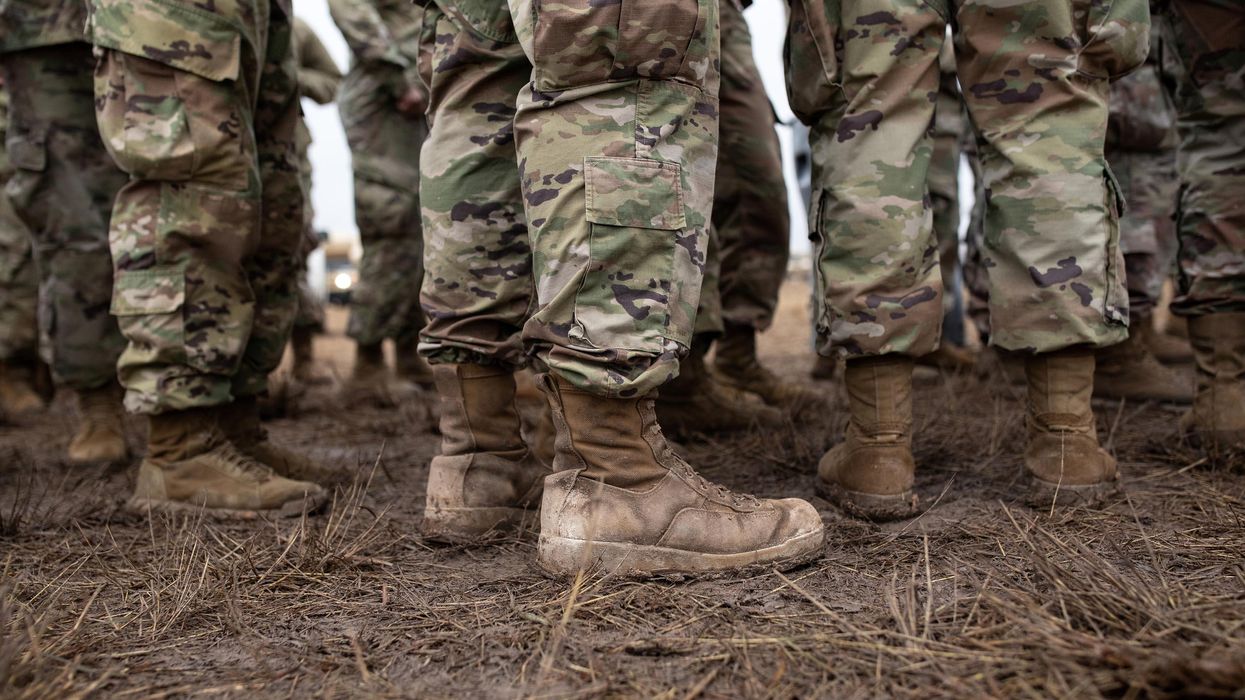(CNN) — Just over a quarter of US service members have experienced food insecurity in recent years, according to a new report from the RAND Corporation.
The report, released this week, said that 25.8 percent of Army, Air Force, Navy, Marine Corps, and Coast Guard personnel were food insecure. More than half of that percentage — 15.4 percent — were active duty troops.
"We were surprised at the estimate. ... I mean that's a lot of people," Dr. Beth Asch, a senior economist at RAND and the lead author of the report, told CNN.
RAND's research was requested by the Defense Department, the report says, after the DOD was mandated by Congress in the 2020 National Defense Authorization Act to report on food insecurity among service members.
The report from RAND looked at data from 2016 and 2018 reports from the Pentagon over the active duty force to come to their estimate, which Asch said was virtually the same as the Defense Department's 2020 estimate. While they were unable to include the 2020 report in their own study, Asch said the estimate of around 25 percent of service members is the most current assessment available.
Financial insecurity is not a new concern for service members. The issue was addressed in 2021 by Defense Secretary Lloyd Austin, who directed the temporary increase of basic housing allowance in some high-cost areas and said the military would provide relief "to alleviate economic insecurity."
"Our men and women in uniform and their families have enough to worry about," Austin said at the time. "Basic necessities like food and housing shouldn't be among them."
While putting together their report, RAND held conversations with military commanders, on-base officials who worked on financial planning, and community providers. In those conversations, the report says that nearly everyone they spoke with agreed that food insecurity was a problem among active duty troops, but there were "wide disagreements" on the prevalence of the issue.
One person at a military installation told RAND that food insecurity "has always been something that's come up." Another person said that the issue of food insecurity is "bigger than we can even get our arms around."
"As compared to the general population, certainly the poverty experience is very different," a military installation representative told RAND. "Service members aren't living in poverty in the same way. But ... it's also the dirty little secret: that there are service members with families and children making the salary of an E-4 who need help getting food on the table."
But it's been difficult for outside organizations and the DOD to understand where the insecurity is stemming from. Asch said the causes are not clear and that was one of the things they left the survey not quite having a handle on, primarily because it was not a part of what they were asked to research by the Defense Department. But understanding the why will be crucial to being able to stop it, she said.
"What we did look at suggests there's a myriad of underlying causes," she said. "And I guess the question is, to what extent those causes are specific to being military. What I mean by that is we know that military personnel move around a lot, they're asked to change locations every few years, and that can have a financial impact on the spouse and their spouse employment. ... Is there something about that, about military service, that's driving that? We just don't know. We suspect there could be those factors, but there could be other factors."
Indeed, those who spoke with RAND for the report pointed to a number of possible causes.
The report identified multiple barriers to service members receiving assistance including the stigma surrounding asking for help, with troops believing that if they seek out assistance their careers will be negatively impacted. The report also said that the military's culture of "self-sufficiency and pride has kept members from seeking help for food or financial insecurity," and that troops are afraid of being viewed negatively by their leadership for doing so.
Spousal employment issues, especially when combined with challenges from Covid-19 and permanent change of station (PCS) moves, was another significant issue that respondents said contributed to food insecurity and financial challenges.
Still, multiple people who spoke with RAND pointed to an inability from some service members to make and stick to a budget, and a lack of awareness of financial management.
"I think if you look at the cars that are on base, you know there are people who are overextending themselves," an installation representative said in the report. "Some of it is the materialistic component of our society and keeping up with the Joneses. The same thing that happens outside the gates of the base happens here, too."
Ultimately, it's unlikely that there will "be one silver bullet" to fix the issue, Asch said. She pointed even to the way that the surveys are conducted, saying there should be consideration for if the way families are surveyed about food insecurity is the best way to go about it. She also said that more data is needed to really understand more about the problem.
But either way, she said, it's clear there is a problem.
"I think that the estimate is high, and that is worthy of attention," Asch said. "But I also think that one needs to recognize that before launching into a full-out assault on the problem, it needs to have a clear understanding of why this problem is happening."
The-CNN-Wire
™ & © 2023 Cable News Network, Inc., a Warner Bros. Discovery Company. All rights reserved.
- Veteran Actress Suzzanne Douglas Dead at 64 ›
- Service Dog of George H.W. Bush Gets A Bronze Statue ›
- Megan Fox Video Chats With U.S. Army Veteran Colin Wayne ›
- Veterans Day - Advocate Channel ›
- Service Dog of George H.W. Bush Gets A Bronze Statue ›
- Black Veterans Sue Federal Government for Denying Benefits Based on Race ›
- This Is What Russia's Withdrawal From a Grain Deal With Ukraine Means for Global Hunger ›
- Food Insecurity Impacts Over 285 Million People | AdvocateChannel.com ›

















































